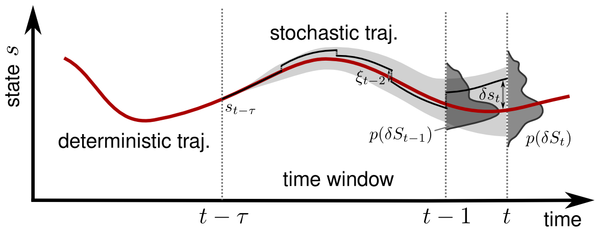Thursday, June 27, 2013
Ancient DNA
Now try and get an ancient auto-catalytic reaction for storing evolving memory ;-)
"The sequencing of a complete horse genome from a bone dating to around 700,000 years ago sheds light on equine evolution and dramatically extends the known limit of DNA survival." Full news @ Nature

"The sequencing of a complete horse genome from a bone dating to around 700,000 years ago sheds light on equine evolution and dramatically extends the known limit of DNA survival." Full news @ Nature

Labels: DNA; genomics
Friday, June 21, 2013
The Origins of Scaling in Cities
"Cities are complex systems of which functioning depends upon many social, economic, and environmental factors. Bettencourt [...] developed a theory to explain the quantitative relationships observed between various aspects of cities and population size or land area." Full article 2 Science


Labels: #cities, #scalinglaws
Tuesday, June 18, 2013
Information Driven Self-Organization of Complex Robotic Behaviors
"Information theory is a powerful tool to express principles to drive autonomous systems because it is domain invariant and allows for an intuitive interpretation. This paper studies the use of the predictive information (PI), also called excess entropy or effective measure complexity, of the sensorimotor process as a driving force to generate behavior. We study nonlinear and nonstationary systems and introduce the time-local predicting information (TiPI) which allows us to derive exact results together with explicit update rules for the parameters of the controller in the dynamical systems framework. In this way the information principle, formulated at the level of behavior, is translated to the dynamics of the synapses. We underpin our results with a number of case studies with high-dimensional robotic systems. We show the spontaneous cooperativity in a complex physical system with decentralized control. Moreover, a jointly controlled humanoid robot develops a high behavioral variety depending on its physics and the environment it is dynamically embedded into. The behavior can be decomposed into a succession of low-dimensional modes that increasingly explore the behavior space. This is a promising way to avoid the curse of dimensionality which hinders learning systems to scale well." Full article @ PLOS ONE: Information Driven Self-Organization of Complex Robotic Behaviors

Labels: information, robots
Thursday, June 06, 2013
Miniature curved artificial compound eyes
"In most animal species, vision is mediated by compound eyes, which offer lower resolution than vertebrate single-lens eyes, but significantly larger fields of view with negligible distortion and spherical aberration, as well as high temporal resolution in a tiny package. Compound eyes are ideally suited for fast panoramic motion perception. Engineering a miniature artificial compound eye is challenging because it requires accurate alignment of photoreceptive and optical components on a curved surface. Here, we describe a unique design method for biomimetic compound eyes featuring a panoramic, undistorted field of view in a very thin package." Full paper 2 PNAS


Labels: biomimetics, robots, vision
Collective regulation of foraging by harvester ant colonies
"Collective behaviour, arising from local interactions, allows groups to respond to changing conditions. Long-term studies have shown that the traits of individual mammals and birds are associated with their reproductive success, but little is known about the evolutionary ecology of collective behaviour in natural populations. An ant colony operates without central control, regulating its activity through a network of local interactions. This work shows that variation among harvester ant (Pogonomyrmex barbatus) colonies in collective response to changing conditions is related to variation in colony lifetime reproductive success in the production of offspring colonies." Full paper @ Nature


Labels: ants, collective behavior, foraging
